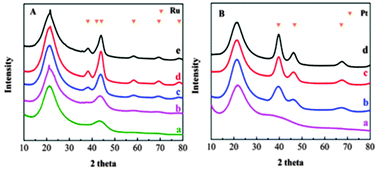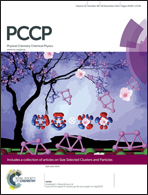The control of Pt and Ru nanoparticle size on high surface area supports†
Abstract
Supported Ru and Pt nanoparticles are synthesized by the method of strong electrostatic adsorption and subsequently treated under different steaming-reduction conditions to achieve a series of catalysts with controlled particle sizes, ranging from 1 to 8 nm. While in the case of oxidation–reduction conditions, only Pt yielded particles ranging from 2.5 to 8 nm in size and a loss of Ru was observed. Both Ru and Pt sinter faster in air than in hydrogen. This methodology allows the control of particle size using a “production-scalable” catalyst synthesis method which can be applied to high surface area supports with common metal precursors.

- This article is part of the themed collection: Size Selected Clusters and Particles: From Physical Chemistry to Catalysis

 Please wait while we load your content...
Please wait while we load your content...